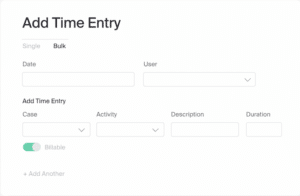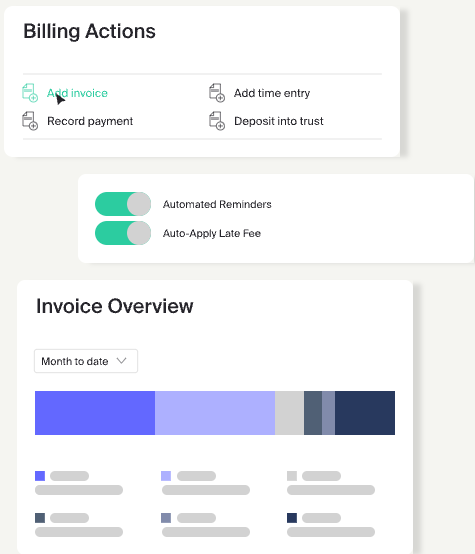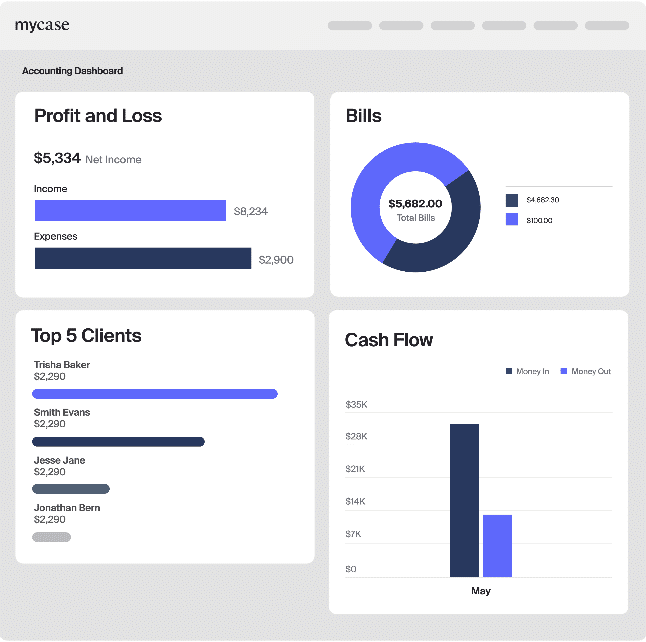How to Calculate Utilization Rate for Law Firms

Utilization rate calculation is a critical key performance indicator (KPI), which when calculated correctly, gives you insight into your firm’s productivity, workload, and profitability. With utilization rate insight, you can plan your workday more efficiently and run your firm to maximize billable hours.
In this article, we’ll cover:
- An overview of utilization rate and what it means for your firm
- The utilization formula and how to calculate utilization rate
- Tips on increasing your utilization rate
What is a Utilization Rate?
A utilization rate measures workload and productivity for a wide variety of businesses. In a law firm, “utilization rate” is a financial KPI that shows how much time you spend on billable versus non-billable tasks. A high staff utilization indicates that your team members spend most of their time on billable work—which means higher cash flow.
How do I Calculate Utilization Rate?
When calculating utilization rates for your law firm, divide the number of billable hours by the total number of hours worked. This utilization formula can account for various time frames such as daily, weekly, or monthly work. It can also be calculated for a specific attorney or a firm as a whole.
Workforce Utilization Rate Example
To put this into practice, if your firm works has worked four billable hours in an eight-hour work day, you would divide four by eight and then multiply the total by 100. As a result, the the workforce utilization rate for your firm for that day would be 50%.
Employee Utilization Rate Example
If a specific employee works 60 hours for the week and bills for 28 of those hours, you would divide 28 by 60 and multiply that total by 100. This employee’s staff utilization rate for the week would be about 47%.
Keep in mind, when calculating work output using a utilization formula (specifically for staff), this KPI shouldn’t solely determine their overall value. Rather these rates should uncover areas of your firm’s operations that are working well or need improvement. For example, low utilization rate KPIs could be a result of poor time tracking. As a result, your firm should unravel ideas for improving your firm’s process of tracking time to help streamline billable work output and boost staff utilization.
What Can You Learn From Your Firm’s Utilization Rate?

A utilization rate reveals where your time is being spent. If you know how to calculate utilization rate, you’ll gain more insight into your firm’s inner workings and be better prepared to make data-driven goals and strategies to increase profitability.
What is a Good Utilization Rate?
Utilization rates can vary based on several factors, including practice area, firm size, attorney experience, and geographical location. Researching industry data trends can help give you an idea of how other firms in your practice area spend their time, what their productivity looks like, and how your firm compares.
According to research from Statista, the average utilization rate for law firms in the U.S. in 2021 was about 31%. Below are tips to ensure your firm’s utilization rate is well above the average.
Four Tips on Improving Your Law Firm’s Utilization Rate

1. Capture Time Accurately
Accurate time tracking is the first step toward improving your firm’s utilization rate. Unfortunately, time tracking can be tedious and leaves a large margin for human error. Research from the American Bar Association found that lawyers who wait until the end of the day to log their hours can lose up to 10% of the billable time—that means losing profits too.
Your firm can boost workforce utilization by tracking every billable minute using legal time tracking software. For instance, with MyCase, legal professionals can easily keep tabs on billable hours with automated time-tracking prompts and timers.

2. Automate Your Invoicing
Reduce the time spent on non-billable and time-consuming invoicing with automation. Legal invoicing software streamlines the process by auto-populating invoice templates based on billable work and sending out automated reminders.
According to the 2021 Industry Report, 21% of surveyed legal professionals said their firm saved six to 10 hours a month using software with invoicing features.
To learn more about all law firm automation tools that can save your firm valuable time and reduce inefficiencies, check out this article.

3. Reduce Client Payment Roadblocks
73% of 2,000 surveyed legal professionals claimed that getting paid was a challenge for their firms. Without the proper tools, payment management and financial reporting can become time-consuming and reduce your billable hours—lowering your employee utilization rate.
Your firm can reduce payment roadblocks by providing online payment options. Accepting credit, debit, and Automated Clearing House (ACH) options are becoming the industry standard and provide clients with a quick and easy way to pay you.
In the 2021 Industry Report, 77% of surveyed legal professionals stated that their firms use online payment processing software, and 61% claimed that their firms collected more money using it.
By implementing online payment options, you provide a secure and seamless payment solution for your clients. Furthermore, you can organize online payment options, set up payment plans, get detailed transaction information, issue refunds, and ensure every transaction is secure.
4. Integrate Software Systems
Software integrations can also reduce the time spent on non-billable tasks and improve staff utilization. For example, the MyCase QuickBooks integration can save your firm time by easily inputting and managing bookkeeping tasks into the MyCase platform. This accounting integration eliminates the need to work out of two separate platforms, which will help improve efficiency and boost utilization rates.
Increase Your Utilization Rate with MyCase
Understanding your firm’s utilization rate will help you make informed decisions that can increase your profitability.
MyCase can help boost your firm’s workforce utilization by reducing time-consuming administrative work and increasing time spent on billable hours. MyCase users can also automate non-billable tasks, get financial insights, and easily communicate with clients from a single platform. Try a risk,-free 10-day free trial—you can cancel any time, for any reason.





